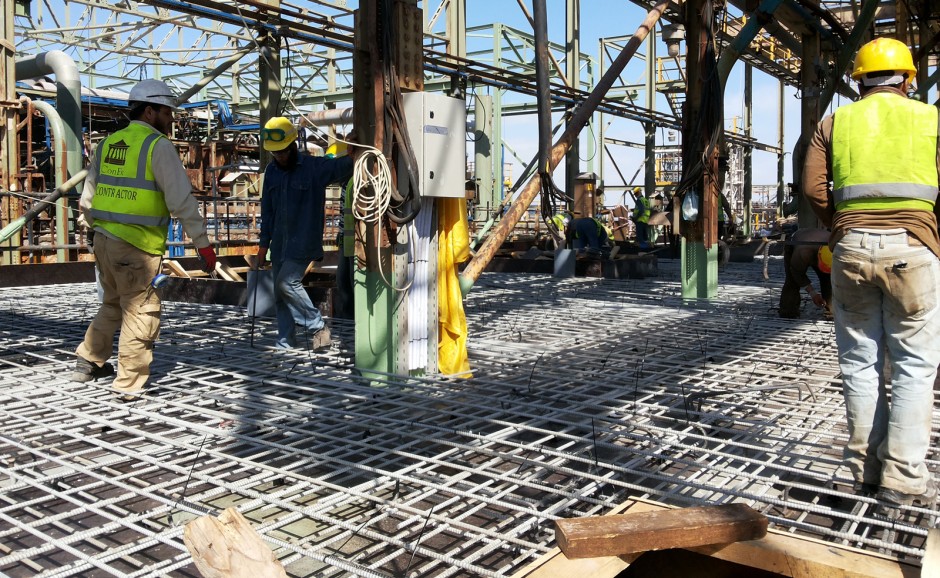As the demand for sustainable infrastructure increases, a renewed look at whole-of-lifecycle savings and the ongoing cost of corrosion is challenging engineers to look beyond conventional construction materials

Glass fiber-reinforced polymer (GFRP) composite rebar, also known as fiberglass rebar, is one such material that in eliminating the risk of corrosion, is proving to be a leap forward in securing an extended asset lifespan.
Composite rebar is designed for use in challenging and corrosive environments. It has a unique combination of mechanical properties that offer a superior alternative to other types of rebar particularly when working in aggressive environments. It is corrosion-free, has high tensile strength, excellent durability, and is 4x lighter than steel. The lightweight nature of composite rebar makes it cheaper to transport and is quicker to install with less worker fatigue. This has been a major advantage given the recent COVID-19 controls on job sites.
Corrosion costs
Corrosion costs governments, asset owners, and the wider community. Proximity to the ocean, sea spray, weather, de-icing salt, inadequate corrosion protection or poor maintenance programs are all contributing factors that inevitably lead to costly reparation work and a shortened asset life. The cost to the economy and ratepayer is ongoing.
A sustainable approach to infrastructure can be achieved by reducing the need for maintenance and eliminating the risk of corrosion. With a long and costly history of corrosion, steel is no longer viewed as a cost-effective option in aggressive environments and as a result, the uptake of composite rebar is growing worldwide.
From composite reinforced bridges to seawalls
An increasing number of projects including bridges, seawalls, and dams are being designed using composite rebar. These projects include:
Kaikoura Highway Repair, New Zealand: For the coastal seawall designed to protect critical rail and road infrastructure, composite rebar was specified as the only concrete reinforcement to use due to the extreme risk of corrosion and the need for sustainability and asset longevity.
Jizan Flood Channel, Saudi Arabia: The 23km, 40m wide channel is critical to the city of Jizan. This area is prone to flash flooding and home to an Aramco oil refinery. The channel was designed to be corrosion-free and highly chemically resistant and is the largest GFRP-reinforced project in the world.
Old Youngs Bridge Repair, Oregon, USA: To achieve the goal of reducing maintenance costs and subsequent traffic delays across this main arterial route, fiberglass rebar was used for the cantilever bridge deck.
Structural engineers are specifying composite rebar
The uptake from the engineering community has been gradual but is gathering momentum. With 30 years of dedicated research, worldwide standards of design and compliance, optimized product developments, and decreasing prices, composite rebar is paving the way for a future of lasting infrastructure.
As the technology has developed and with enhanced manufacturing efficiencies, the cost of composite rebar is more competitive in upfront and life-cycle savings. This is ultimately accelerating adoption.
Composite rebar offers distinct advantages. It is corrosion free, highly chemically resistant, lightweight, has a high tensile strength (close to 2x the strength of steel), and consumes 70% the embodied energy of steel. No maintenance is needed and due to its corrosion-free properties and durability, it requires less concrete coverage.
Design codes and Transport Department approvals
With comprehensive composite FRP rebar standards and academic research to support GFRP rebar use, structural and civil engineers are selecting composite rebar as a superior alternative to steel in corrosive environments or where they require non-conductive reinforcement.
The advances in composite FRP technology have been welcomed by engineers who are committed to designing sustainable and cost-efficient infrastructure. Composite rebar has also gained the interest of leaders in construction as governments and private firms alike are looking to alternative materials to increase asset life span, reduce costly repairs, and build lasting structures.




